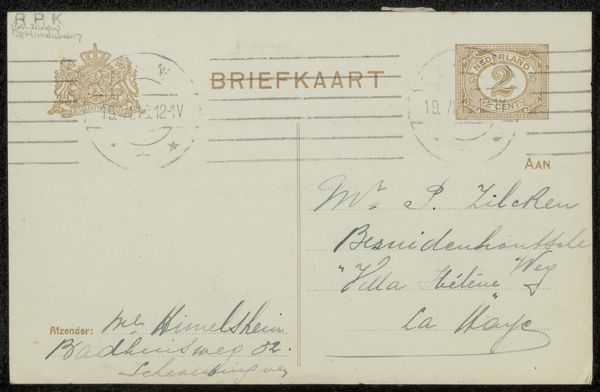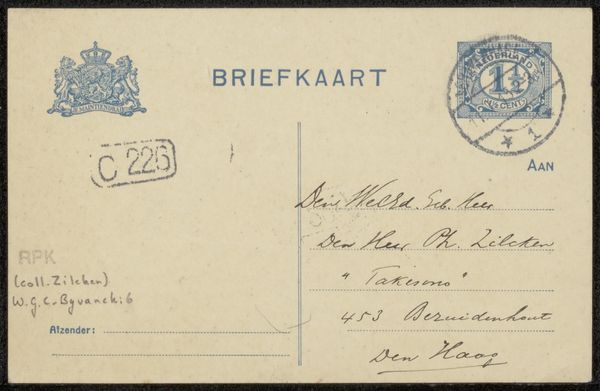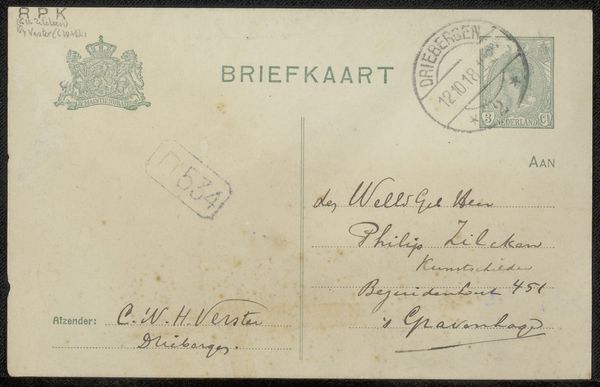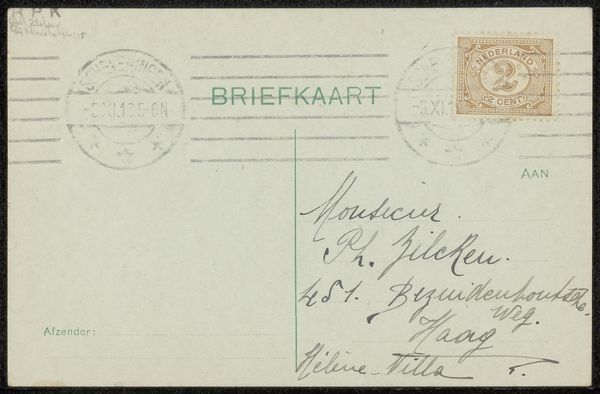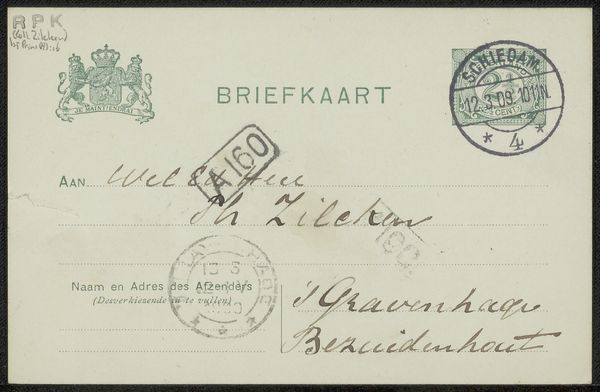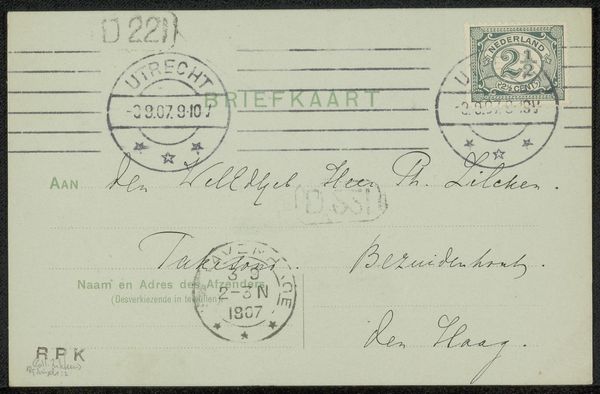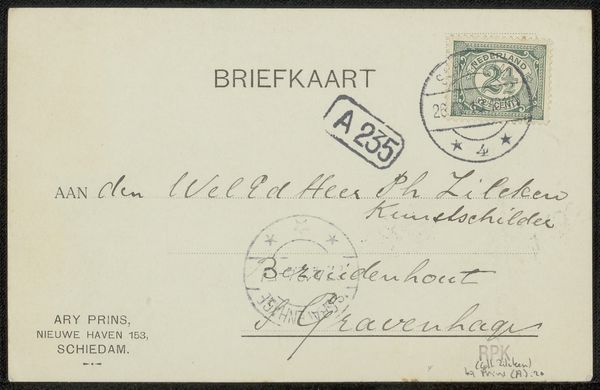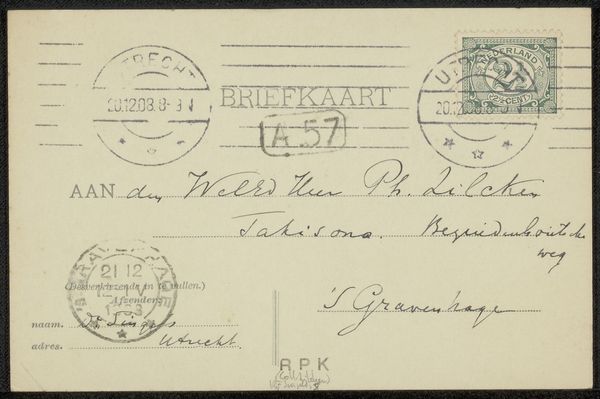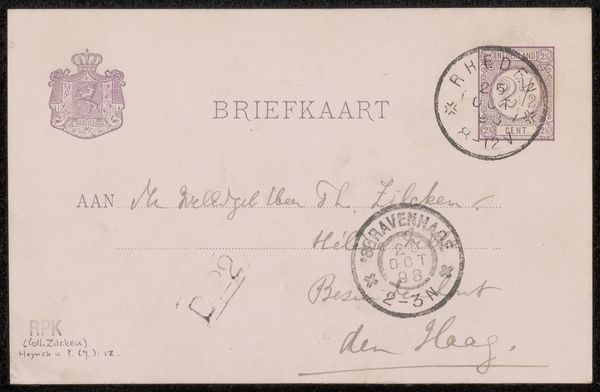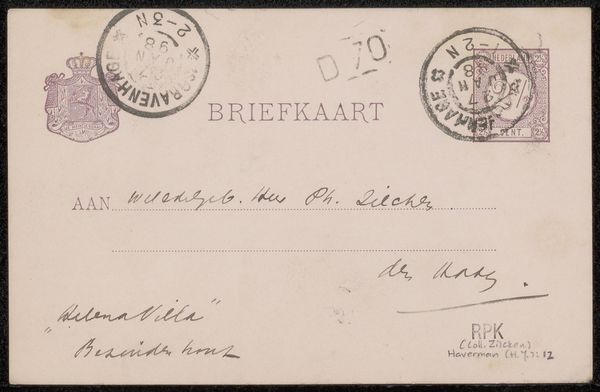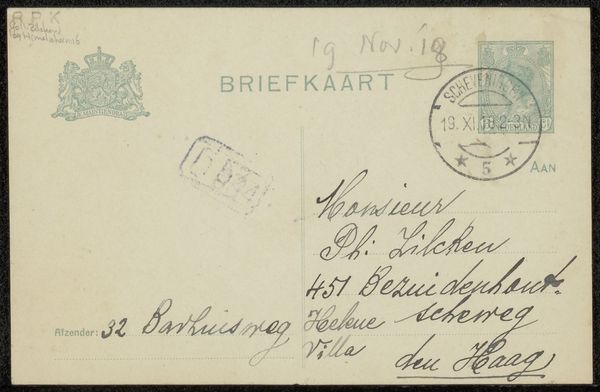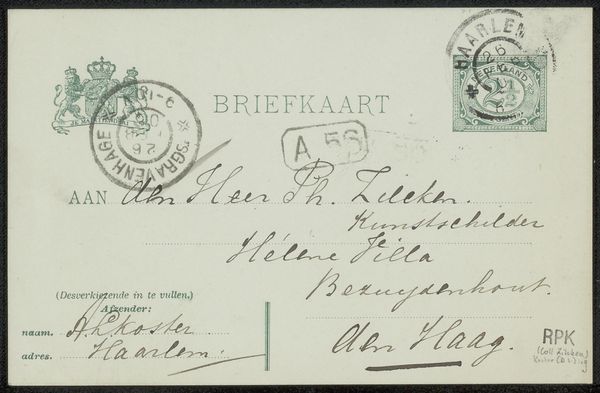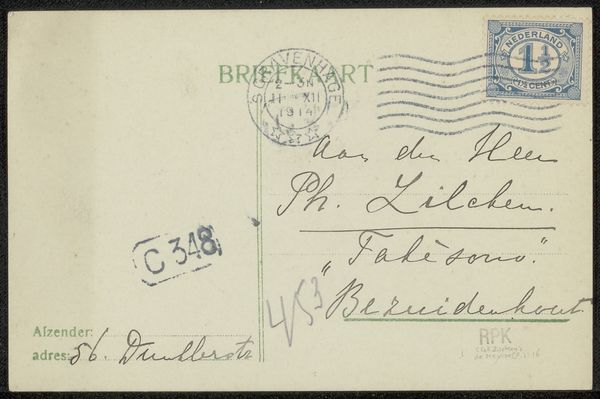
drawing, textile, paper, ink, pen
#
portrait
#
drawing
#
dutch-golden-age
#
textile
#
paper
#
ink
#
pen
#
calligraphy
#
monochrome
Copyright: Rijks Museum: Open Domain
Curator: This is a postcard, “Briefkaart aan Philip Zilcken,” likely from 1909, penned by Willem Byvanck using ink on paper. Its monochrome aesthetic and the style of calligraphy certainly give it an old-world feel, doesn't it? Editor: Yes, it feels very personal, almost like eavesdropping on a private conversation. How do you interpret the significance of a seemingly mundane item like a postcard being preserved as art? Curator: Precisely. It challenges our notions of what constitutes art and who has access to it. We need to consider the context of early 20th century correspondence. Whose voices were being heard? How did power dynamics influence these interactions? How might this reflect the experiences of individuals excluded from the dominant narrative, perhaps marginalized communities or those whose stories are often erased? What does the seemingly innocuous handwriting tell us? Editor: That’s interesting. I hadn’t considered how something so ordinary could be a window into social structures. The fact that it's a personal message makes me wonder about the relationship between Byvanck and Zilcken. Curator: Absolutely. Examining the power dynamics implicit in the correspondence - their relative social positions, gender, even handwriting styles - offers insights into the hidden biases and unspoken rules governing their interactions. Think about who has the privilege of having their personal effects archived and displayed. What other narratives might be lost simply because they lack the means to preserve their own history? Does it reveal the inner anxieties in pre-war Europe? Editor: So, by analyzing this postcard, we can potentially uncover layers of social and political meaning beyond just the message itself? Curator: Exactly. We use objects like these to open dialogues about inclusivity, representation, and whose stories are told. What seemed mundane transforms into a potent vehicle for social commentary. It serves as a tool for critical reflection. Editor: This gives me a totally new perspective on looking at everyday objects as potential carriers of history and social commentary. Thank you! Curator: My pleasure! Now you can't unsee these hidden stories!
Comments
No comments
Be the first to comment and join the conversation on the ultimate creative platform.
